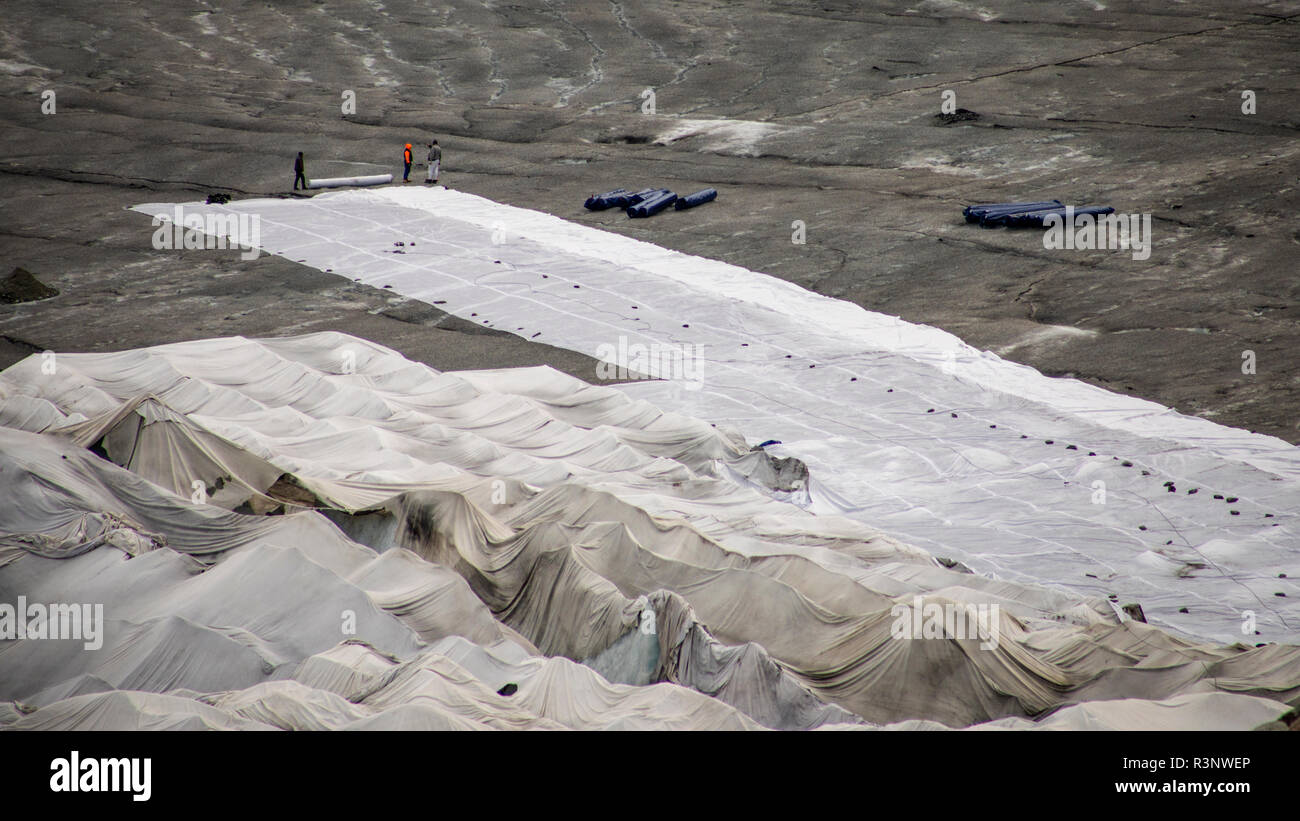Climate | Albedo | Rhone: Huge fleece blankets cover parts of the Rhone Glacier in Switzerland in an attempt to stall the inevitable melting of the snow and ice. After a winter with record amounts of snow, most of it was gone when this image was taken on July 14th 2018, exposing the darker ice. While snow is a brilliant reflector of the energy from the sun, the darker ice absorbs the energy instead, accelerating the melting of the glacier. The color and darkness of glacier ice vary all over the world, depending on build-up of pollution, age of the ice, particles picked up by the ice and by mic

Image details
Contributor:
Orjan Ellingvag / Alamy Stock PhotoImage ID:
R3NWEPFile size:
61.7 MB (3.1 MB Compressed download)Releases:
Model - no | Property - noDo I need a release?Dimensions:
6194 x 3484 px | 52.4 x 29.5 cm | 20.6 x 11.6 inches | 300dpiDate taken:
8 August 2018Location:
Rhone Glacier, Oberwald, Valais, SwitzerlandMore information:
Climate | Albedo | Rhone: Huge fleece blankets cover parts of the Rhone Glacier in Switzerland in an attempt to stall the inevitable melting of the snow and ice. After a winter with record amounts of snow, most of it was gone when this image was taken on July 14th 2018, exposing the darker ice. While snow is a brilliant reflector of the energy from the sun, the darker ice absorbs the energy instead, accelerating the melting of the glacier. The color and darkness of glacier ice vary all over the world, depending on build-up of pollution, age of the ice, particles picked up by the ice and by microorganisms in the ice. The glacier ice is however rarely white as snow. With shorter winters and vanishing snow cover, the melting of the glaciers is accelerating. The Rhone Glacier (pictured) now melts more than 70 centimeters in thickness every week in the summer months. Between 1996 and 2006, an estimated 0.9 billion cubic metres of water melted yearly from the Swiss glaciers. That number is likely much higher today. Switzerland just had the hottest July since 1864, it has the lowest rainfall since 1921, and the rivers are running at record low levels. The covering of the glacier is the idea of Philipp Carlen, who owns and operates an ice cave at the mouth of the glacier. The glacier is still melting, but by covering it with blankets, he is able to attract tourists who are coming to see the dying glacier.